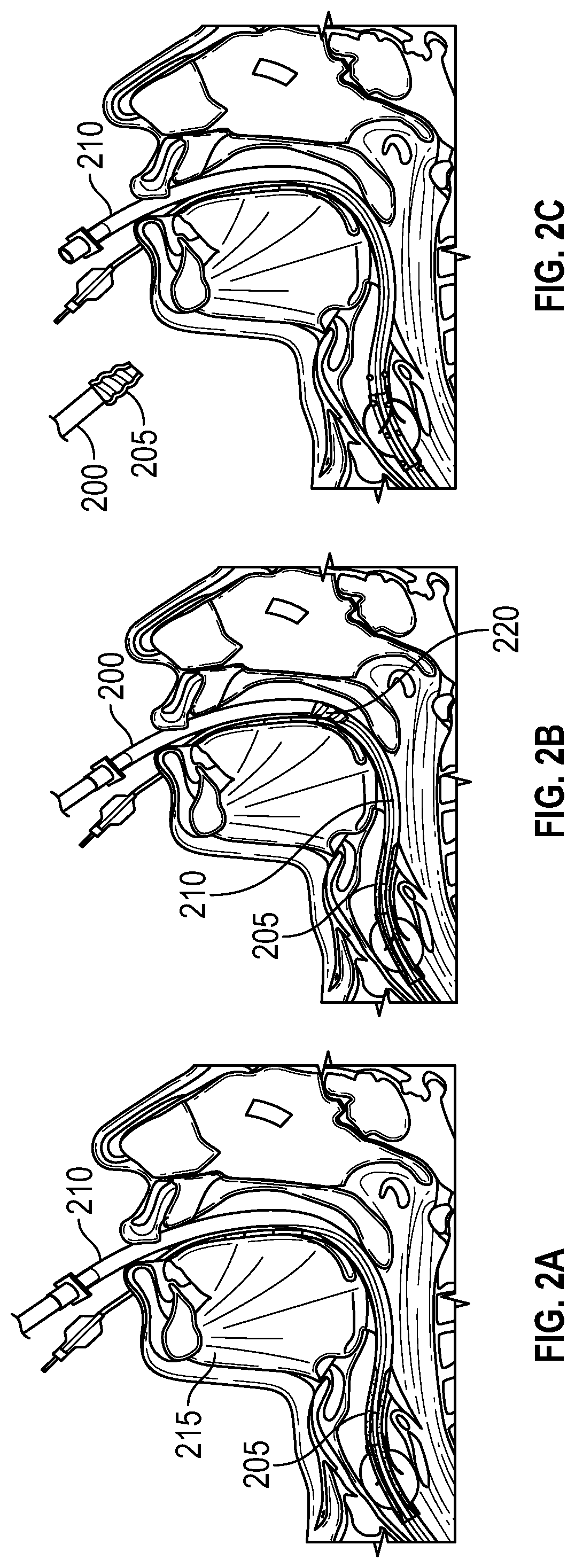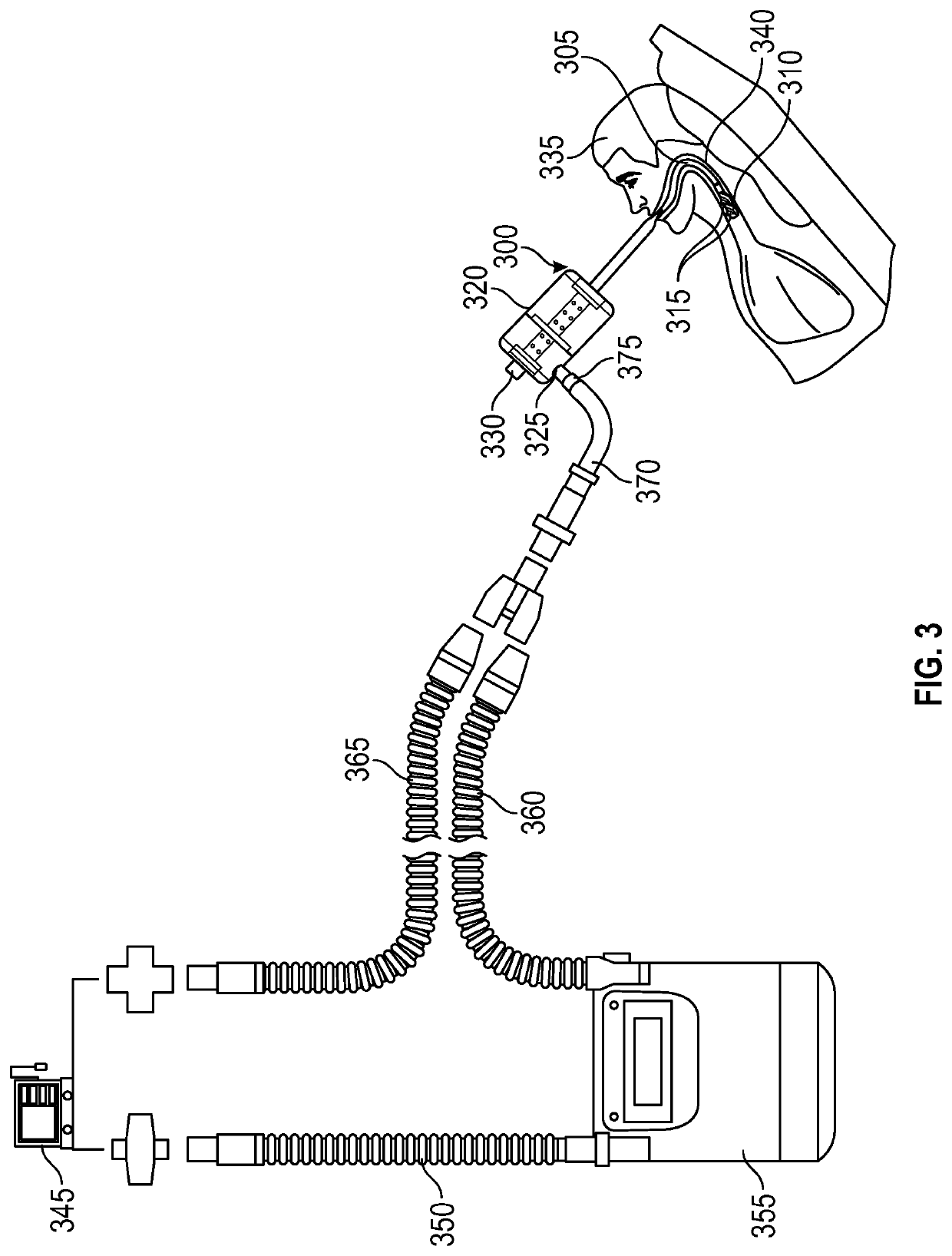Biofilm removal device for endotracheal tubes
a technology of endotracheal tubes and biofilms, which is applied in the field of medical devices, can solve the problems of limiting air flow, more difficult spontaneous breathing tests for patients, and potentially serious complications
- Summary
- Abstract
- Description
- Claims
- Application Information
AI Technical Summary
Benefits of technology
Problems solved by technology
Method used
Image
Examples
Embodiment Construction
[0021]A device for removing biofilm may be configured to clean the inner lumen of an endotracheal tube of an orally intubated patient without damaging the tube and without the need for extubating the patient. Accordingly, an exemplary embodiment of the present invention may include a hollow catheter having a tip at the distal end, wherein said device is configured to be inserted, tip-first, down an endotracheal tube of an orally intubated patient. Said tip may further comprise a cylindrical central portion and one or more fins configured to extract debris from the inner lumen of the endotracheal tube as the device is rotated, either manually or mechanically, inside the endotracheal tube. Each of the one or more fins may be configured as a helix positioned to spiral around said cylindrical central portion of the tip, thereby forming one or more channels, defined by the pitch of said helix, about the circumference of the cylindrical central portion. Thus, the device may be configured ...
PUM
 Login to View More
Login to View More Abstract
Description
Claims
Application Information
 Login to View More
Login to View More - R&D
- Intellectual Property
- Life Sciences
- Materials
- Tech Scout
- Unparalleled Data Quality
- Higher Quality Content
- 60% Fewer Hallucinations
Browse by: Latest US Patents, China's latest patents, Technical Efficacy Thesaurus, Application Domain, Technology Topic, Popular Technical Reports.
© 2025 PatSnap. All rights reserved.Legal|Privacy policy|Modern Slavery Act Transparency Statement|Sitemap|About US| Contact US: help@patsnap.com



